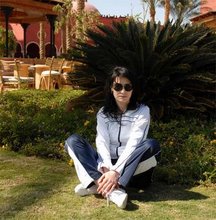 Akhtala (from turkish “white glade”) is a 10th century fortified monastic complex located in the
Akhtala (from turkish “white glade”) is a 10th century fortified monastic complex located in the Akhtala monastery is one of a few orthodox monasteries in
From the ancient times silver and non-ferrous metals were extracted from this region Georgian king Herakles took Greeks here for works from
In 1887-1889 French archeologist engineer and geologist Jacque de Morgan, discovered rectangular stone sepulchers near Akhtala, dating back to the 8th century, with valuable cultural items made of clay, bronze and iron. A crypt from III millennia B.C. was found here, when people had been burring in sitting position. “This region is of special interest in the study of the origins of metals. Older than Europe and
The monastery of Akhtala is not only a harmonious synthesis of Armenian, Georgian and Byzantine cultures, but it is also a kind of thermometer to measure historical and cultural situation of the time.
It is supposed that Kyurikids founded the fortress and the
The walls of St. Astvatsatsin church are covered with the beautiful, well-conserved frescoes, and only the face of Holy Virgin had been damaged by Tamerlane hordes. Next to the fortress there is a rock named for Tamerlane and probably one of his wives is buried beneath that rock.
The frescoes are painted in XIII century right after conversion of church into Chalcedonic. And if the colorings are drawn them near Byzantine mural paintings, the themes of frescoes are quite Armenian. People of the village are telling that once the bright and vivid colors of frescoes had been distracting the visitors from the mass and the priest, infuriated, ordered to cover them by lime.
The Greeks call the monastery “Meramani”. September 20-21 are the days of pilgrimage and many Armenians, Greeks and Georgians come together at this sacred place.
Akhtala monastery with its architecture, picturesque landscape, breathtaking frescoes and mysterious legends inspired “Pasolini” of Armenian cinematography Sergey Paradjanov, who filmed some scenes of “The color of pomegranate” exactly on this place.
So, Akhtala monastery testifies once again that Armenian people have been creating the values exceeding the limits of national. Akhtala with its architecture, carvings and frescoes is one more vivid reflection of Armenian art.




0 comments:
Post a Comment